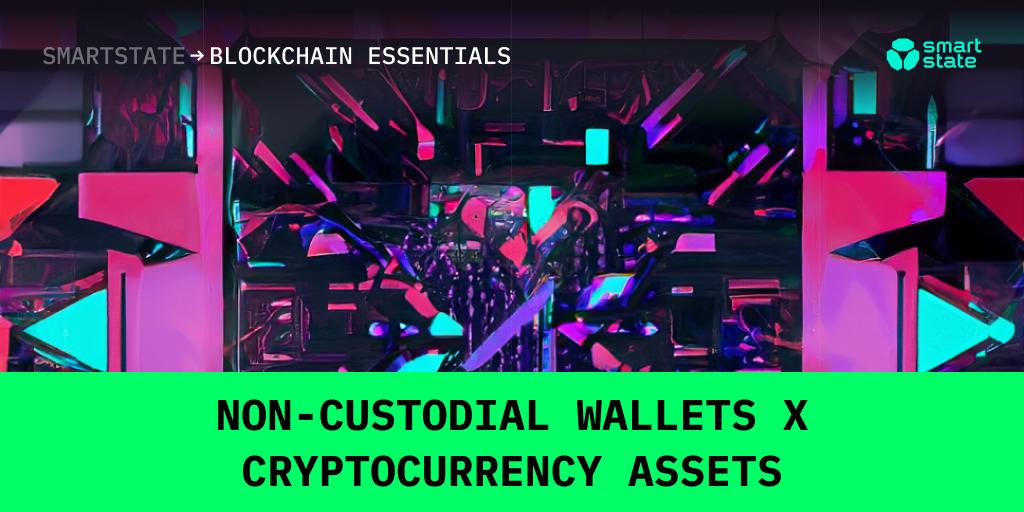The role of non-custodial wallets in managing and securing cryptocurrency assets
There are two types of wallets involved in digital financial transfers, custodial and non-custodial. The main difference is based on the key storage method. Custodial wallets store and backup private keys automatically, which is rather convenient for users, who have just signed in to get access to the wallet. Non-custodial wallets allow the user to take care of their private keys by themselves. As soon as the wallet is created, its owner receives a file with the private key and a special seed phrase, which could be used later to restore access to the wallet, if necessary.
Custodial wallets are still popular due to their convenience, but they rely on principles typical for centralized platforms. This may cause security risks, as their owners have to trust platform developers, who take responsibility for asset security. Thus, non-custodial wallets are attracting more interest and their popularity has been rising recently among users who seek higher security and try to avoid risks to their funds because of vulnerabilities and hacks.
Non-custodial wallets offer the user complete control over their funds without sharing responsibilities with someone else, and therefore potentially better protection against errors, hacks and losses. Non-custodial wallets are tailored for decentralized crypto currencies and platforms. They allow users to become more independent in the management of their assets, offering them to store and transact their crypto while maintaining control over their private keys.
Pros and cons of non-custodial wallets
Both custodial and non-custodial wallets have their strong and weak sides. Beneficial sides of non-custodial wallets include the following:
- Privacy. One of the key benefits of this type of wallet is privacy. They focus on allowing users to transact and store their funds while keeping sensitive personal information and identity in secret. There is no need of revealing it to the third party. There is also no one to report the transactions to.
- Security. One of the most important features. The users keep their private keys to themselves, avoiding risks of centralized exchanges or services where their data can be compromised and hacked easier.
- Personal control. Users do not have to depend on the third party in their financial decisions, instead managing their assets and funds on their own accord. It is possible to combine wallets of different types of storage and get access to a wider range of functions, apart from the storage.
However, non-custodial wallets also have their downsides:
- Self-responsibility. Without side control, all the responsibility for security falls on the owner. Users have to take care of their private keys, wallets and devices to avoid loss or unauthorized access to their data. Any mistake can lead to compromising of their data and loss of funds and assets.
- Knowledge level requirements. Protecting data and the wallet requires a certain level of technical knowledge (including knowledge of backups, private keys and secure currency management). Efficient use of non-custodial wallets may prove especially challenging to individuals new to the cryptocurrencies.
- Limitations. There is also certain risk of losing access to the wallet, and significant difficulties may present with attempts to recover it. With a private key lost or forgotten, it may be almost impossible to recover assets. It is harder or even impossible to get access to centralized tools, and the user interface is more complex.
Types of non-custodial wallets
There are different types of non-custodial wallets, and they can be split into two big groups: hardware wallets and software wallets.
- Hardware wallets. Non-custodial hardware (or ‘cold’) wallets store users’ funds and assets offline, which makes it more difficult to be attacked and robbed successfully. They are not dependent on online exchange platforms and require physical connection to get access to the assets. It is a better choice for storing large cryptocurrency sums. The most popular and advisable hardware non-custodial wallets are Ledger, KeepKey, Trezor, Bitbox, and ColdCard.
- Software wallets. Software (or ‘hot’) non-custodial wallets are special applications that can be easily downloaded to the user’s device and are operated online, without the need of physical connection and disconnection, which makes them easier to use and suit the users who transact moderate sums frequently. They are encrypted and need a password to access keys, but being always online they are more vulnerable to attacks and malware risks. Among the most advisable are MetaMask, Coinnomi, ZenGo, Bitpay, Edge, and Trust.
How to choose a non-custodial wallet?
There are certain criteria, which can help users to choose the best and most convenient non-custodial wallet. What must the users pay attention to in their choice?
- Wallet type. It is better to choose the wallet which meets the personal needs among the big variety of hardware, software and web wallets. Each of the types offers their own benefits to suit any preferences and security requirements.
- Security level. The key criteria in choosing a non-custodial wallet. Better to choose a wallet with robust security measures (including multi-factor authentication, encryption and backup options). Data privacy and private key protection are vital, too. To find the best option it is a good practice to study the reviews and track records related to security incidents and errors.
- Supported networks. It is important that the chosen wallet should support the intended blockchain technology and cryptocurrencies, as wallets have different degrees of compatibility with different currencies.
- Rates. It is necessary to study staking and interest rates of preferred cryptocurrencies offered by chosen wallets. They should meet the user's investment goals and expectations. Take into account that non-custodial wallets provide users with an additional source of income in staking their coins and earning interest on their holdings.

